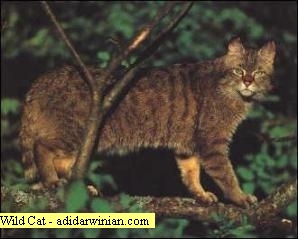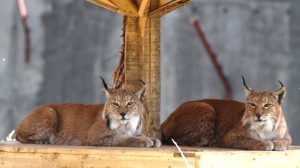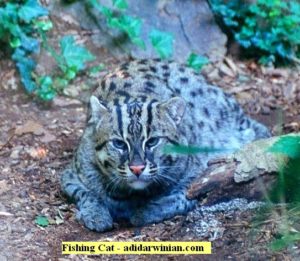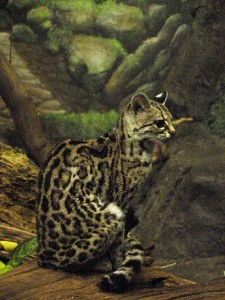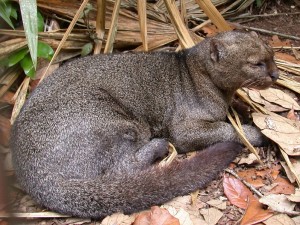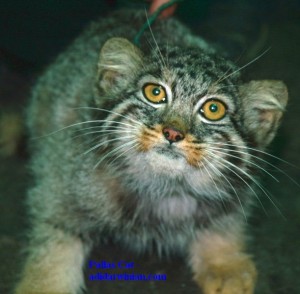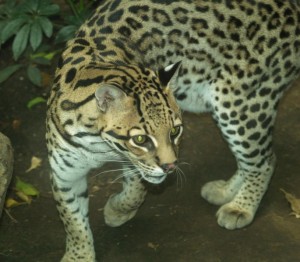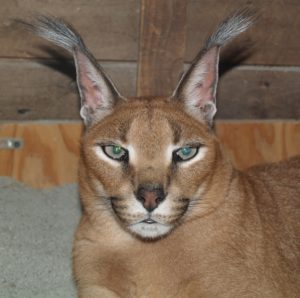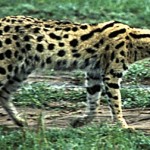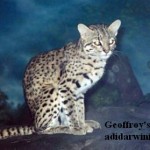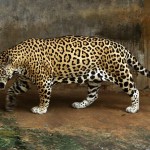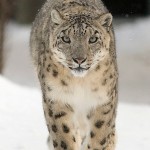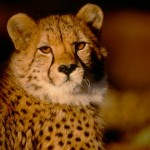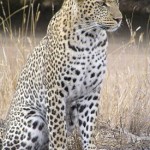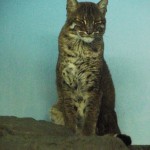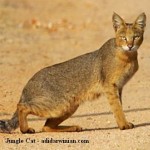The Glory of the Cat – The Adored Pet!!!
Two Short Pieces of Poetry, From the Pen of an Earnest Biologist (Aditya Sardana aka Adidarwinian), Dedicated To the Glory of the Cat for the Pet Lovers around the Globe:
“For some the cat is Hilarious,
For others the cat is Furious,
For me the cat is Prestigious and Glorious.”
“For the Ages,
The Cats form the Divine Images,
In the Minds of the Sages.”
The Glorious Cat – Its History, Fame, and the Never Ending Legends
“A lame cat is better than a swift horse when rats infest a palace” – an ancient Chinese saying
The cat is too glorious as an animal not only in its unique biology that blesses it with the amazing physical abilities unrivaled by other animals but also in its long and interesting history. The bones of a cat have been found near the human bones in a ninety five hundred years old grave, which was unearthed in Cyprus, dating from 7,500 to 7,000 years B.C., making it the oldest known evidence of the domestication or taming of the cats. This is much earlier in time than the domestication of these wonderful animals by the Egyptians.
Reference to this celebrated mammal has been made in the ancient Sanskrit writings of the mythological and mystical land of India, which are more than two thousand years old, and still more early references are found in the inscriptions, monumental figures, and the cat mummies of the ancient Egypt. These preserved relics shed a bright light on the answer to one of the most difficult questions in the field of zoology that how this least tameable of the animals was domesticated and adored as a pet.
The cats have always acquired a prominent place in the human culture. There are many legends about them and their mystical powers that are dispersed within the extensive literature created by the human beings for ages. Evidences show that even more than thirty five hundred years ago, the cat flourished as a beloved and revered animal along the banks of the great river Nile. Egyptians used to call cats as Mau-Mai, Maau, Mau, or Maon. The ancient Egyptian kingdom of the Pharaohs paid homage to them and regarded them as the sacred animals. Cat was decorated with jewels and worshiped in the temples. In the Egyptian civilization, this animal was so much adored that the figures of cats were placed in the Egyptian homes, and even their death was respected by burying them in the tombs. To show veneration, trinkets or ornaments representing both the goddess and cat were worn.
Egyptians protected their cats from getting injured, took great care of these beloved mammals when they were alive, and mourned their death with expressions and signs of grief. To express grief, they even shaved off their eyebrows. The Egyptian’s idea of a respectful and correct burial of a human being involved the practice of Mummification (process of the mummification was used by the ancient Egyptians in order to preserve body parts of the dead from degradation until the day of resurrection), and this same process was used for their beloved cats. If a dead cat’s owner was wealthy, his or her cat was very elaborately mummified by using the finest linen and enclosing the body in a bronze box with a statue of cat placed on the top. The richest paid special reverence to their dead cats and buried their dearest dead cats with the pomp and magnificence of a royal personage.
Since the ages, cats have been a part of many mystical legends. They have been associated with the occult, evil, witchcraft, and magic, especially, the so-called black magic, but now these false perceptions have lost their value, at least, for the rational minds. Not only the pet lovers and biologists adore these great animals, but even the Hollywood has made a lot of wealth by selling cat-centered movies; how can one forget the cat named Tom in the famous “Tom and Jerry” cartoon films.
Click this image to enlarge –
The Glorious Cat – Its Place in the Menu of Life
The cat is a mammal which belongs to the order Carnivora, that is, the flesh-eaters. The zoologists divide the order Carnivora into the two suborders, viz., – the Caniformia (the dog-like or caniform carnivores) and the Feliformia (the cat-like or feliform carnivores).
Before knowing where exactly the taxonomists have put our glorious and beloved cats in the long list under the menu of carnivorous animals, we should at least give a keen glance at the classification of the dog-like carnivorous animals or the Caniformia. The order Caniformia (the dog like or caniform carnivores) consists of the following families –
- Canidae – The family Canidae contains the dogs, wolves, coyotes, foxes, and the jackals.
- Ailuridae – Red Panda (Ailurus fulgens)
- Mephitidae – The family Mephitidae contains Skunks and the Stink Badgers.
- Mustelidae – Mustelidae is the largest family within the order Carnivora, and is comprised of weasels, polecats, mink, stoats, marten, wolverines, fishers, badgers, otters, and others.
- Odobenidae – Walruses (Odobenus rosmarus)
- Otariidae – The family Otariidae contains Sea lions and the fur seals.
- Phocidae – Seals (they are also called the hair seals or true seals or earless seals)
Note: Seals, fur seals, sea lions, and walruses are collectively referred to as the Pinnipeds (wing-footed).
- Procyonidae – This family comprises of Cacomistle, Coatis, raccoons, and relatives.
- Ursidae – It is the family of theBears (Polar Bear, Black Bear, Brown Bear, Spectacled Bear, Sloth Bear, Giant Panda, and the Sun Bear).
Now, let us move to the suborder that contains our much cherished cats and other cat-like mammals. The order Feliformia (the cat-like or feliform carnivores) consists of the following families –
- Eupleridae – This family consists of the Malagasy carnivores which are restricted to the island of Madagascar.
- Herpestidae – This family consists of the Mongooses including the Meerkats.
- Hyaenidae – Striped hyena, Aardwolf (Proteles cristata), brown hyena, and spotted hyena (Crocuta crocuta)
- Nandiniidae – African palm civet (Nandinia binotata)
- Viverridae – It consists of the civets, genets, linsangs, binturong, and relatives.
- Felidae – This family consists of the cats; a member of this family is called a feline or felid. The family Felidae consists of two subfamilies – Pantherinae and Felinae.
- Pantherinae – This subfamily consists of the roaring cats (leopards, lions, tigers, and jaguars).
- Felinae – This subfamily consists of the small cats:
- Cheetah (Acinonyx)
- Caracal
- Small cats – Chinese desert cat, domestic cat, jungle cat, Pallas’ cat, sand cat, wild cat, black-footed cat
- Catapuma – Asiatic golden cat and Bay cat
- Small American cats – Colocolo, pantanal cat, Geoffroy’s cat, kodkod, ocelot, pampas cat, Andean mountain cat, little spotted cat, margay
- Serval
- Lynxes – Lynx, bobcat
- Marbled cat
- Asian small cats – Leopard cat, fishing cat, rusty-spotted cat, flat-headed cat, Iriomote cat
- African golden cat
- Puma – Cougar or Mountain lion, Florida panther, and Jaguarundi
Click these images to enlarge –
The Glorious Cat – An Evolutionary Marvel
Extraordinarily Flexible, Swift, and Athletic!!
“Cats’ stunning acrobatic feats have been the envy of even the finest of our gymnasts” – Aditya Sardanaaka Adidarwinian
Cats show extraordinary mobility and flexibility due to the fluidity of its body’s design. They show stunning acrobatic feats unparalleled by other animals, such as:
- A cat can twist itself into unusual positions.
- It can very easily curl itself into a perfect circle during sleep, twitching its tail in a rhythmic fashion across its nose.
- It can jump up about six times its length or more than eight feet in a single bounce.
- It can jump from great heights without being hurt.
- From a sitting start, it can bounce up to nine times its height.
- It can make sudden changes in direction when pursuing and capturing its prey.
- It can narrow its shoulders and chest to squeeze easily through very tight spaces.
- In a wink of eye, it can reorient itself in midair and land on its feet.
Powerful muscles in the hind legs of a cat and the flexible nature of the joints in its limbs and vertebrae, helps it to jump up about six times its length or more than eight feet in a single bounce. This amazing animal uses its tail as a highly specialized tool for communication, and also, for balancing its body while climbing, jumping, etc. Its tail allows it to maintain its orientation during sharp turns made while running, for example, when hunting a prey. The structure of its body gives it a marvelous flexibility. Its supple spine makes it very fast, flexible, allows it to perform elegant gymnastic feats, and also makes it a high-speed runner. Between its spinal vertebrae, are present the elastic, cushioning and thick fibrocartilaginous discs. These discs are very pliable (bendable) and resilient (rebounding). In order to reach top speed, a cat lengthens its stride, and thereby increases its speed, by extending and flexing its spine in succession. When starting a new stride, using claws as spikes for traction, it stretches its body to its maximum length, with every stride driving it about three times its body-length.
A cat’s shoulder blades or scapulae are attached to the sides of its body by muscles only and not by any bone, therefore, allowing movement in almost every direction. This feature allows the shoulder blade or scapula much enhanced freedom to move with the cat, thereby increasing its running stride. Moreover, unlike the motion-restricting, long and anchored clavicles or collarbones of human beings, a cat possesses small, rudimentary, muscle-attached “floating collarbones or clavicles”. This provides narrow chest to these animals which accounts for the amazingly long stride of these animals and contributes to their ability to squeeze through tight spaces or openings.
Click these images to enlarge –
The Righting Reflex: Falls from Great Heights without Landing Dead!!
Cats possess an innate ability called as “the righting reflex”. They possess an uncanny righting reflex, in which they orient or adjust their bodies to prepare for the impact of falling from a height. This impeccable ability imparts these animals the excellent survival instincts. The giant counterparts of domestic cats hunt on and above the ground. Domestic cat, following its giant counterparts, shows a remarkable sense of balance, nimbleness, and ability in order to spring up and land from high levels.
When a cat falls from a high elevation, it instantly rotates its head in the right direction. If, for example, a cat is upside-down (that is its spinal or dorsal or back is facing down) during a fall, it turns its head in the order that its face sees downwards (towards the floor) and the back of the head upwards. This systematic righting reflex of cat occurs due to its natural or evolutionary orienting nervous mechanisms in its eyes and inner ears. This adjustment of the head brings the forequarters (the part of the body of a four-legged animal that consists of its forelegs, shoulders, and the adjoining parts) also in the downward direction. Next, its spine twists in response to the above reorientation, and then the hindquarters or the rear portion gets are similarly aligned. Moreover, its tail helps in balancing and propelling its body during the act of reorientation. Cat also bends its back before touching the ground. This helps in dissipating the force of landing. The impact of landing is reduced by the soft cushions of the foot-pads.
Domestic cat is quite lighter in body weight. This animal at reaching the terminal velocity (the maximum uniform velocity reached by a body falling through a medium such as air, when the force of resistance of the medium is equal and opposite to the force of gravity) during a free fall is significantly less heavy than a human being. Moreover, if it falls from a greater height it would have more time to complete adjustment or reorientation due to its innate righting reflex before landing on ground, than if it falls from a lower height. After it has adjusted itself and if is able to reach the free falling at terminal velocity, cat spreads its legs, adding to the drag that helps in slowing it down. During the free fall, this mammal is able to relax it muscles, and this relaxation of muscles reduces the impact of the injuries that otherwise would have happened with tensed muscles.
Cats jumping down, towards the ground, from the high-rise buildings is a not an infrequent phenomenon. Open windows at the higher stories of buildings pose danger to them, as they fall out of them so frequently that the veterinary doctors have named this condition as the High-Rise Syndrome. Such falls can result in broken limbs and pelvises, head injuries, punctured lungs, shattered jaws, and even death. These mammals do not deliberately jump off from high places but most cats fall accidentally. These accidents occur as our beloved cats get highly focused on the objects of their interests. A moving car, a bird, or any other animal can distract them so much that they can lose their balance and fall.
It is a misconception that cats would not be injured if they fall only from one or two stories of buildings. They may actually get more injury when falling from shorter heights than by falling from greater heights. Lower heights do not give these carnivorous mammals enough time to reorient or adjust their body in order to fall correctly. So, the cats have a higher chance of suffering less severe injuries if they fall off from a great height. This is so as they would be able to reorient their body by virtue of their uncanny righting reflex. Also, there are more chances of achieving the terminal velocity when falling from a greater height against the lower heights.
Caution!!
It should be remembered that cats do not have nine lives as has been portrayed by the cat legends. When a cat falls from a high-rise building, it is quite probable that it may end up severely injured or dead. It should never be assumed that it has not survived the fall; rather it should be immediately rushed to the nearest veterinary hospital. Statistics have revealed that there is ninety percent survival rate for the one of the best pets of man – cats – when they fell from high-rise buildings and receive instant medical attention.
Click these images to enlarge –


